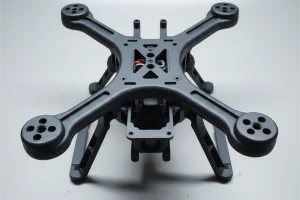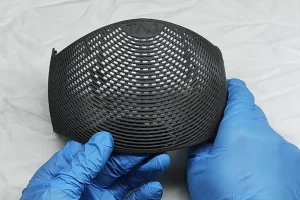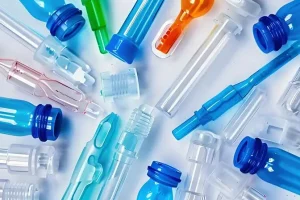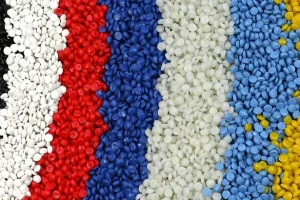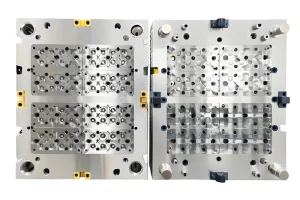The injection molding cycle is the whole process from the injection of the plastic melt by the injection molding machine to the cooling, molding, and demolding of the product. It includes four steps: injection time, cooling time, mold opening and closing time, and demolding time. The length of the injection molding cycle directly affects the quality of injection molding and production efficiency. Therefore, understanding the standards of injection molding cycles and their optimization methods is crucial for injection molding production.

Ⅰ. Understand the Injection Molding Production Time
1. What is Injection Molding Production Time
The time it takes to complete the injection molding process is called the molding cycle. The molding cycle directly affects labor productivity and equipment utilization. Therefore, during production, every relevant time in the molding cycle should be shortened as much as possible on the premise of ensuring quality. In the entire molding cycle, injection time and cooling time are very important and have a great impact on product quality. The filling time in injection time is directly related to the filling rate, and the charging time in production is generally about 3-5 seconds.

2. Injection molding cycle time includes
2.1 Mold Closing Time
Injection molding mold closing time refers to the time when the mold is closed before injection. If the mold closing time is too long, the mold temperature will be too low and the molten material will stay in the barrel for too long; if the mold closing time is too short, the mold temperature will be relatively high.

2.2 Injection Time
Injection time is the time from the start of injection to when the plastic melt fills the mold cavity (plunger or screw advance time). In production, the injection time for small plastic parts is usually 3 to 5 seconds, and the injection time for large plastic parts can be up to tens of seconds. The filling time in the injection time is inversely proportional to the filling speed; the injection time is shortened, the filling speed is increased, the orientation decreases, the shear rate increases, and the apparent viscosity of most plastics decreases, especially plastics that are sensitive to shear rates.

2.3 Pressure Holding Time
Pressure holding time is the time that pressure is maintained after the mold is filled (the time the plunger or screw remains forward). It is usually 20-25s, and can be as long as 5-10 minutes for thicker plastic parts. If the holding time is too short, the parts will not be packed out, and it is easy to produce sink marks, and the dimensions of the parts will be unstable. If the holding time is too long, the stress on the parts will increase, resulting in warpage, cracking, and difficulty in ejection.

2.4 Cooling Time
Cooling time is also important for good parts. The length of cooling time is mainly determined by part thickness, plastic’s thermal and crystallization properties, and mold temperature. The end of cooling time should be based on the principle of ensuring that the part does not deform when it is ejected. Cooling time is usually 30-120 seconds. If cooling time is too short, the part will be easily deformed; if cooling time is too long, it will not only reduce production efficiency, but also cause ejection difficulties for complex parts, and forced ejection may even cause ejection stress.

2.5 Mold Opening and Closing Time
This refers to the time it takes for the mold to open and close completely and for the opening and closing plate to stay in place. The length of the mold opening and closing time affects the life of the injection mold and the dimensional accuracy of the product. Generally, it takes between 1 and 5 seconds.
2.6 Ejection Time
This refers to the time it takes to smoothly eject plastic products from the mold after the mold is opened. If it’s too short, it might affect product demolding and quality, and if it’s too long, it will reduce production efficiency. The demolding time is usually between 1-5 seconds.

Ⅱ. Factors Affecting Injection Molding Production Time
1. Plastic Stuff
Different plastic stuffs have different physical stuffs like melting hotness, heat flow number, shrinkage number, etc., so they need different injection molding times to fill the mold, cool down and harden. For example, high molecular weight resins need a long time to make sure they fill up and harden during injection molding.

2. Mold Structure
The complexity of the mold structure and where the suture lines are will affect the injection time. For example, some plastic parts need a long flow path when they’re being filled, which means they need a longer injection time. The cooling system of the mold will also affect the injection time. The complexity of the injection mold is one of the things that affects how long it takes to make. Simple injection molds usually only take a few weeks to make, while complex injection molds can take months or even more than a year. Complex injection molds include parts with special shapes, structures with multiple functions, parts that need to be really precise, and so on.

3. Size and Weight of the Mold
The size and weight of the mold also affect the manufacturing cycle. Generally, larger molds require more material and take longer to process, so the manufacturing cycle will be longer.
4. Mold Materials and Manufacturing Processes
he materials and manufacturing processes of the mold also affect the manufacturing cycle. For example, using more advanced manufacturing processes and materials can improve manufacturing efficiency, as well as the quality and life of the mold.

5. Mold Design and Testing
Before manufacturing, we need to design and test the injection mold. The design and testing process takes a lot of time and effort, especially for complex injection molds. In addition, if problems are discovered during testing, the design and testing may need to be re-designed, resulting in an extension of the manufacturing cycle.
6. Number of Mold Cavities
The number of cavities in a set of molds and the number of products that can be produced from a set of molds depends on the size of the customer’s product market. There is definitely a difference between making two products and one product, and the processing time will also be different.

7. Injection Molding Machine Performance
Different injection molding machines have different parameters like maximum injection pressure, injection speed, and injection volume. These parameters will affect the length of injection molding time. Generally speaking, the better the performance of the injection molding machine, the more stable the control, and the shorter the injection time.
8. Processed Part Size
Processed part size is also one of the factors that affect injection molding time. Larger parts require longer injection molding time, so the injection molding time must be adapted according to the size of the workpiece.

9. Product Structure
This refers to how hard it is to make the mold for the plastic part sample you gave us. The more complicated the shape of the plastic part, the harder it is to make the mold. Technically, the more parting surfaces a plastic part has, the more assembly positions, buckle positions, holes, and ribs there are, the harder it is to process, and the longer it takes to make the mold.
10.Product Requirements
Different customers have different requirements for products. Whether the designed appearance is matte, glossy or mirror, all affects the production cycle of plastic molds.

Ⅲ.How to Optimize the Injection Molding Cycle
1. Optimize the Injection Molding Process
The injection molding process is a big factor that affects the injection molding cycle, so optimizing the injection molding process can effectively shorten the production cycle. The parameter settings of the injection molding machine should be adjusted according to the type and requirements of the plastic. Specifically, optimization can be done from the following aspects:
A. Study the fluidity and thermal properties of injection molding materials and choose injection molding machine parameters reasonably;
B. Design reasonable wall thickness and cavity structure;
C. Operate at the highest possible temperature to shorten the injection molding cycle;
D. Develop more reasonable injection molding process parameters through simulation software analysis, mold testing and actual production.

2. Improve Equipment Accuracy
Making the equipment more accurate is one of the key factors in shortening the injection molding cycle. For example, the robot should grab the part accurately and put it quickly into the right place to make the cycle time as short as possible. Here are some ways to optimize injection molding machines based on the actual situation and the accuracy of the equipment:
A. Use accurate sensors to detect parameters such as product size and temperature;
B. Adjust the speed and strength of the robot to reduce the time when the production is stopped;
C. Make sure the equipment and molds are accurate to avoid wasting time because of the accuracy of the processing.

3. Choose Efficient Molds
Picking a good mold is one of the best ways to shorten the injection molding cycle. With a good mold, we can make sure the injection molding machine is stable and accurate, and we can also make sure we can make things faster. How do we pick a good mold?
A. Use good mold materials to make the mold last longer;
B. Use molds that can be heated and cooled to make things faster;
C. Use molds that make more than one thing at a time to make things faster;
D. Use molds that can be changed quickly to make things faster.

4. Perform Equipment Maintenance
Good equipment maintenance can also effectively shorten the injection molding cycle. Here are some equipment maintenance considerations:
A. Do regular equipment maintenance to make sure equipment is always in top condition;
B. Use appropriate lubricants to reduce friction and improve equipment efficiency;
C. Regularly check various parts of the injection molding machine and replace damaged parts in a timely manner.
5. Cool it Longer
Cooling it longer can make it stay the same size and be better.
6. Use Better Stuff
Use stuff that flows good and doesn’t shrink a lot to make it go faster.

7. Shoot it Faster
Shoot it faster so it doesn’t push too hard and you save power.
8. Make the Mold Better
Make the cooling better and make the thing smaller and better to make it go faster.
Ⅳ. Conclusion
Injection molding cycle time versus production cost. The shorter the injection molding cycle time, the better, as long as product quality is ensured. The more parts produced, the lower the manufacturing cost per part. What does the injection molding cycle time include? Injection time, holding pressure time, cooling time, mold opening time, and demolding time. Shorten cycle time: reduce part wall thickness/runner size, reduce mold opening and closing distance/ejector stroke, quickly remove parts, robot operation, speed up opening/closing of safety doors, reduce part sticking, correctly select cooling time, and set the switch reasonably/close speed and ejection speed/number of times. Shortening injection cycle times increases productivity.

The injection molding cycle is one of the key parameters that affect the quality and production efficiency of injection molded products. If the injection molding cycle is unstable, it will affect the size, surface quality, strength, and production efficiency of the product. Therefore, in the injection molding production process, the stability of the injection molding cycle is very important. Injection molding manufacturers should pay attention to this issue and improve the stability of the injection molding cycle through continuous optimization of processes and equipment, thereby improving product quality and production efficiency.

Improving the injection molding production cycle can enhance production efficiency and product quality, and reduce production time and costs. The injection molding production cycle is influenced by many factors, including mold structure, materials and equipment parameters. Adjusting injection time, raising mold temperature, increasing injection pressure and speeding up injection rate are effective ways to optimize the cycle. Companies should take full account of cycle optimization in the production process to enhance production efficiency and quality, cut costs, and improve sustainable development capabilities.

In short, shortening the injection molding production cycle, improving production efficiency, and saving injection molding costs are important issues for the survival and development of enterprises. Enterprises should strengthen the maintenance and upkeep of equipment, improve product design, select appropriate materials, and strengthen internal management to effectively improve the efficiency of injection molding production and achieve cost savings.


